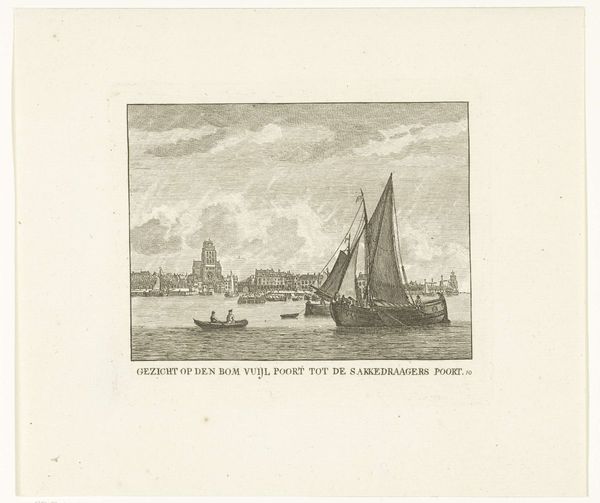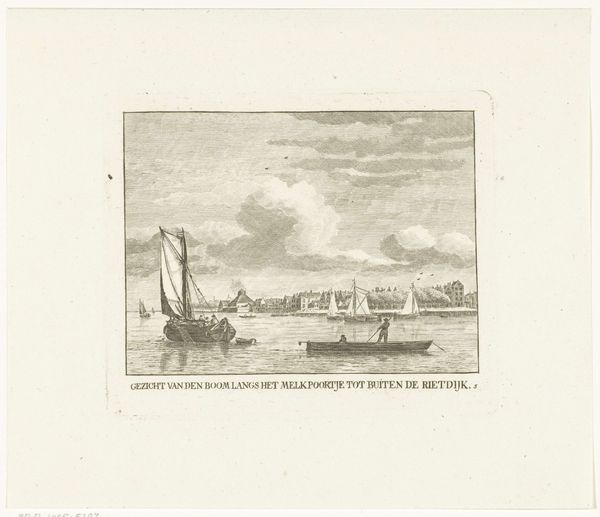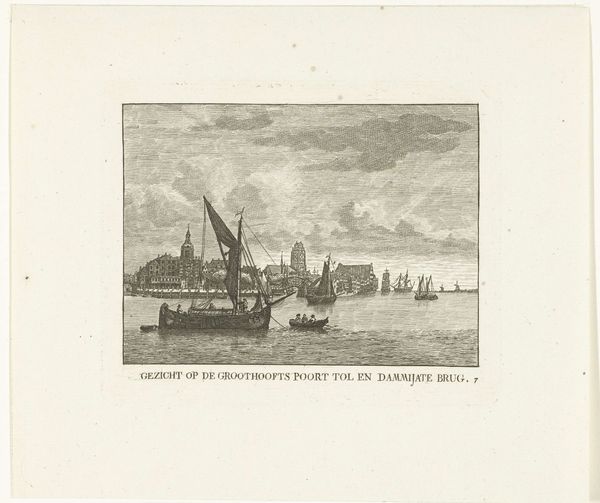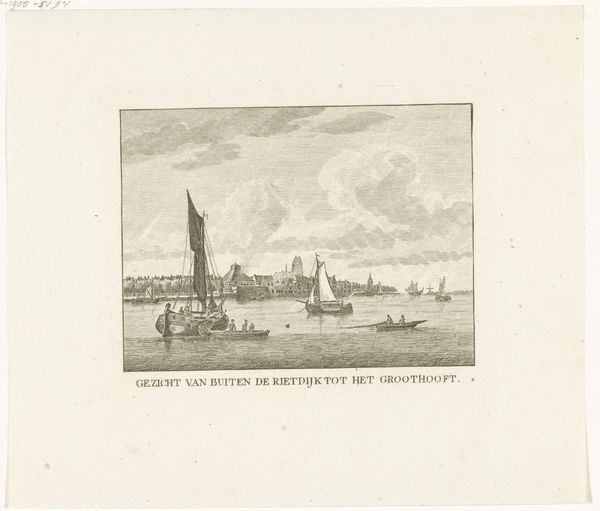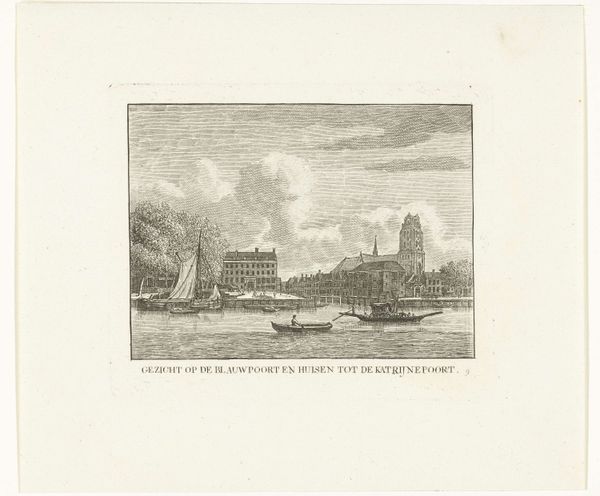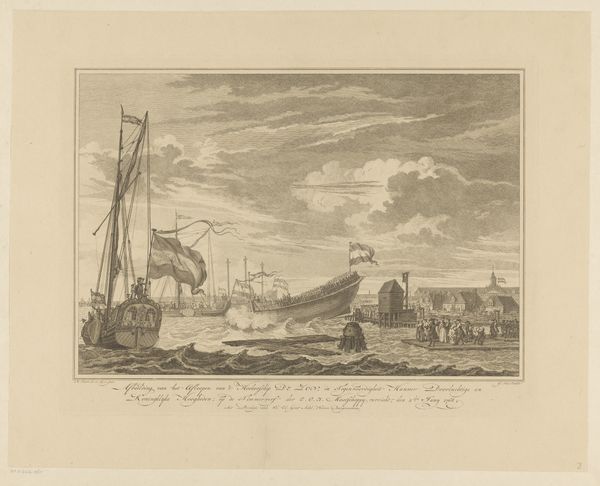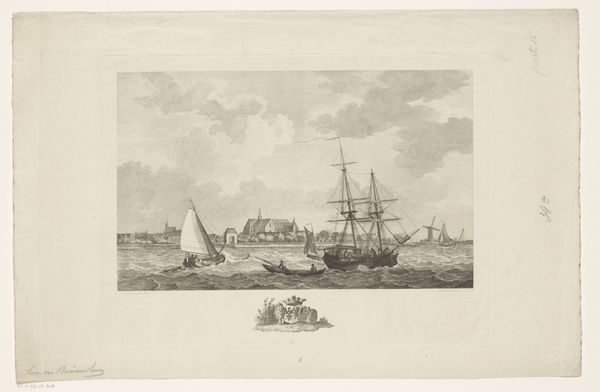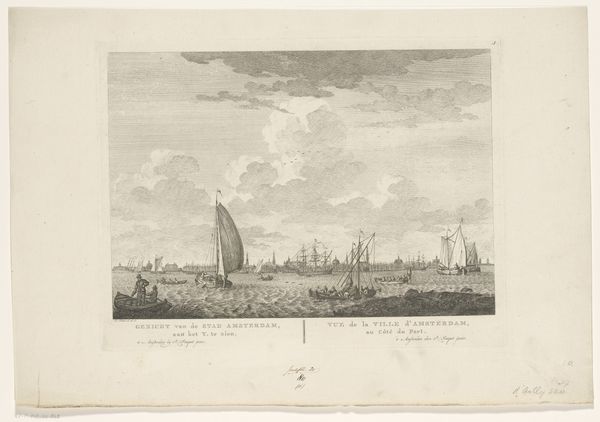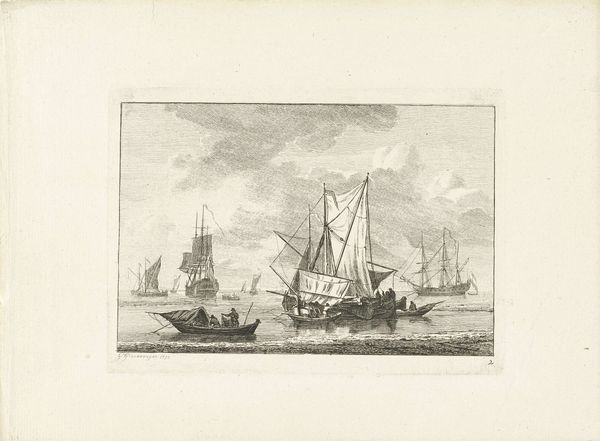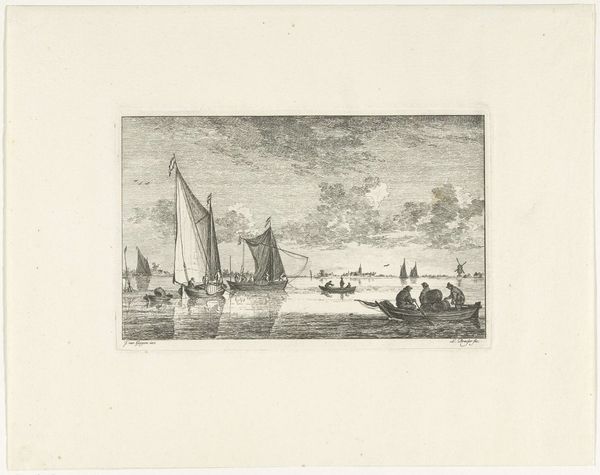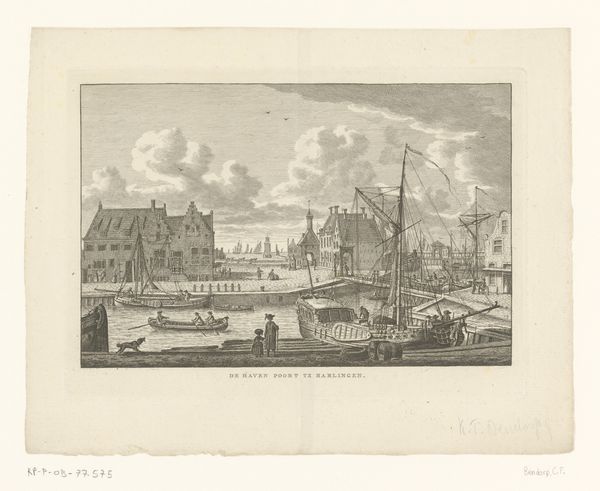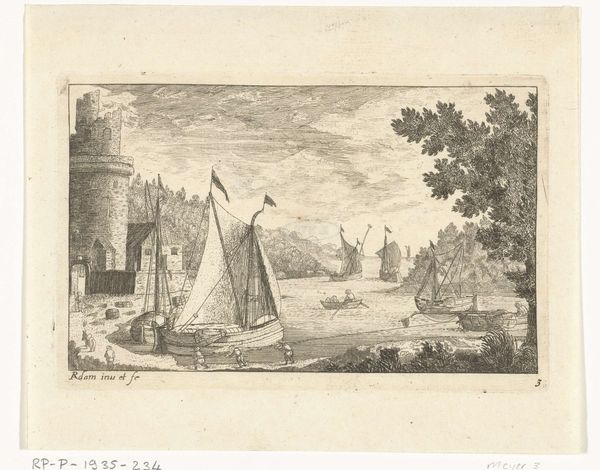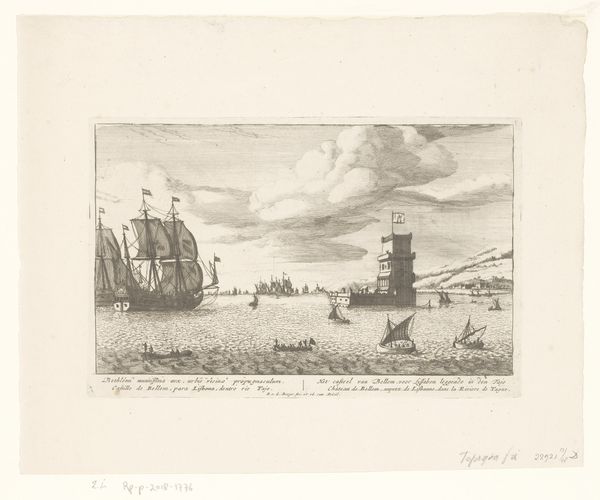
Gezicht over Merwede langs kade met huizen en Tol te Dordrecht 1803
0:00
0:00
drawing, print, engraving
#
drawing
# print
#
old engraving style
#
landscape
#
romanticism
#
line
#
cityscape
#
engraving
Dimensions: height 116 mm, width 141 mm
Copyright: Rijks Museum: Open Domain
Curator: This is "Gezicht over Merwede langs kade met huizen en Tol te Dordrecht," an engraving by Carel Frederik Bendorp I, created around 1803. It resides here at the Rijksmuseum. Editor: It feels like looking at a dream frozen in monochrome. The delicate lines create a scene both detailed and ethereal. Curator: Precisely. Bendorp's expert handling of line and shadow gives a real sense of depth to the scene. Notice how the dense crosshatching suggests darker tones, pulling the eye towards the central ship. Editor: Yes, the ship dominates. It’s more than just a vessel; it embodies the era's maritime power structures. The detail of laboring sailors and merchants, obscured, yet implied—it all feeds into the economic realities of the time. Dordrecht, as a strategic port, had implications for trade, labor, and empire. Curator: Absolutely. We can read that visual language through this meticulously rendered ship. I'm particularly drawn to how Bendorp manipulates perspective. The sharp focus on the ship contrasts beautifully with the more gestural depiction of the cityscape receding into the background. Editor: And those buildings clustered along the waterfront likely represent more than just quaint houses; they symbolize the Dutch merchant class’s investment in overseas endeavors and serve as silent witnesses to voyages and exploitation. It begs the question: Whose perspective are we really seeing here? Curator: It is true that Bendorp presents a somewhat idealized vision. The crisp, clear lines suggest order and prosperity. What's fascinating is how this seemingly straightforward landscape engages with conventions of Romanticism while also documenting a very specific time and place. Editor: Ultimately, isn't landscape always a staged representation, fraught with absences and omissions? Even a scene that feels neutral speaks volumes if you understand who benefitted from those particular narratives. Curator: An essential reminder to always probe deeper than the surface, even when faced with seemingly placid waters and delicate lines. Editor: Indeed. It encourages critical dialogue about what’s seen and unseen.
Comments
No comments
Be the first to comment and join the conversation on the ultimate creative platform.
